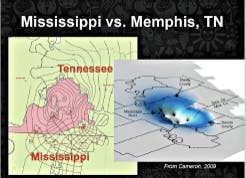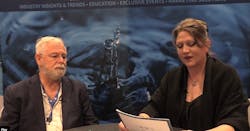CORVALLIS, OR, Oct. 30, 2009 -- Although declining streamflows and half-full reservoirs have gotten most of the attention in water conflicts around the United States, some of the worst battles of the next century may be over groundwater, experts say -- a critical resource often taken for granted until it begins to run out.
Aquifers are being depleted much faster than they are being replenished in many places, wells are drying up, massive lawsuits are already erupting and the problems have barely begun. Aquifers that took thousands of years to fill are being drained in decades, placing both agricultural and urban uses in peril. Groundwater that supplies drinking water for half the world's population is now in jeopardy.
A new analysis by researchers at Oregon State University outlines the scope of this problem, but also points out that some tools may be available to help address it, in part by borrowing heavily from lessons learned the hard way by the oil industry.
"It's been said that groundwater is the oil of this century," said Todd Jarvis, associate director of the Institute for Water and Watersheds at OSU. "Part of the issue is it's running out, meaning we're now facing 'peak water' just the way the U.S. encountered 'peak oil' production in the 1970s. But there are also some techniques developed by the oil industry to help manage this crisis, and we could learn a lot from them."
Jarvis just presented an outline of some of these concepts, called "unitization," at a professional conference in Kyoto, Japan, and will also explore them in upcoming conference in Stevenson, Wash., and Xi'an, China. Other aspects of the issue have been analyzed in a new documentary film on the special problems facing the Umatilla Basin of eastern Oregon, a classic case of declining groundwater problems. (DVD copies of the documentary are available free upon request, by calling 541-737-4032.)
The problems are anything but simple, Jarvis said, and are just now starting to get the attention needed.
"In the northern half of Oregon from Pendleton to the Willamette Valley, an aquifer that took 20,000 years to fill is going down fast," Jarvis said. "Some places near Hermiston have seen water levels drop as much as 500 feet in the past 50-60 years, one of the largest and fastest declines in the world.



